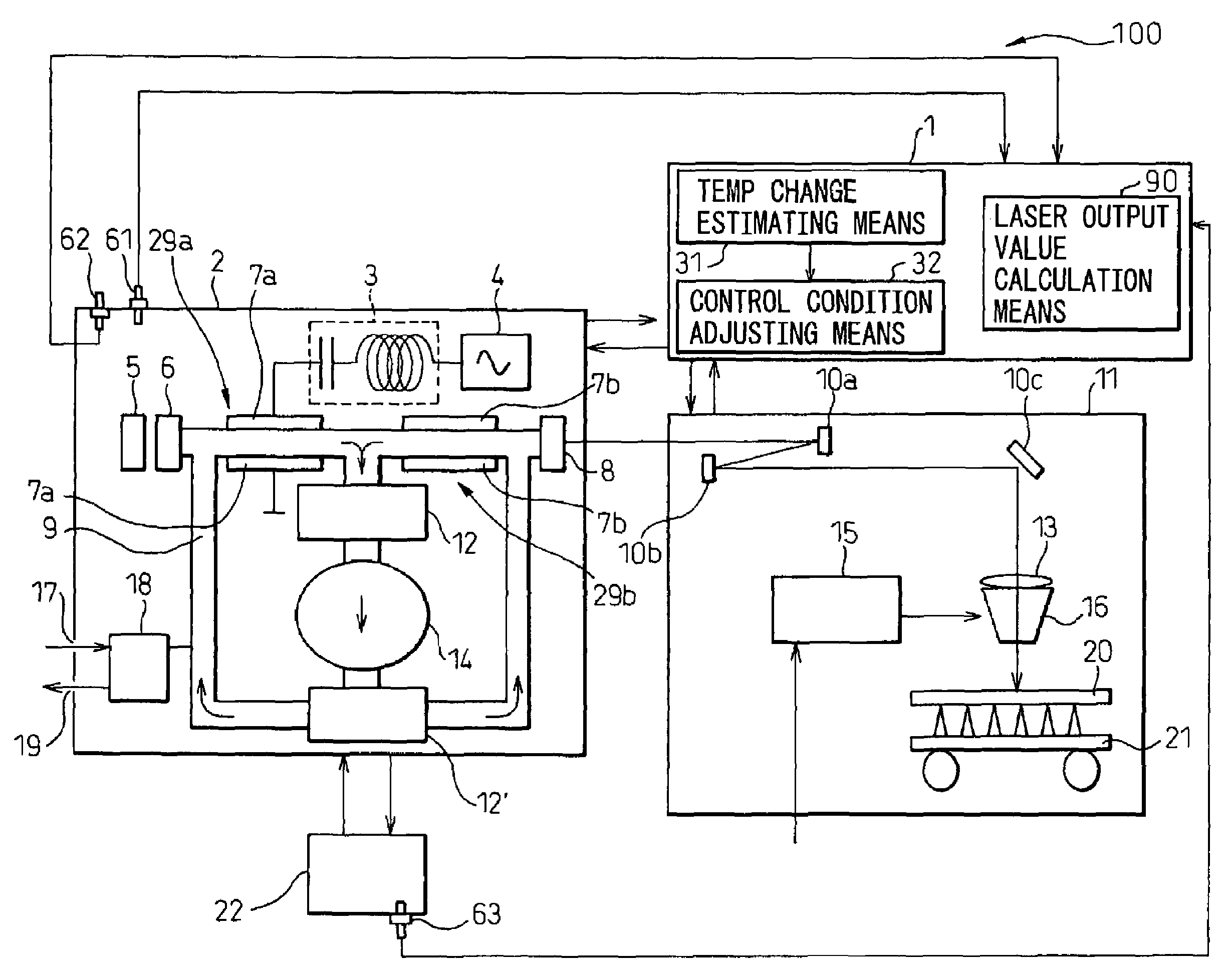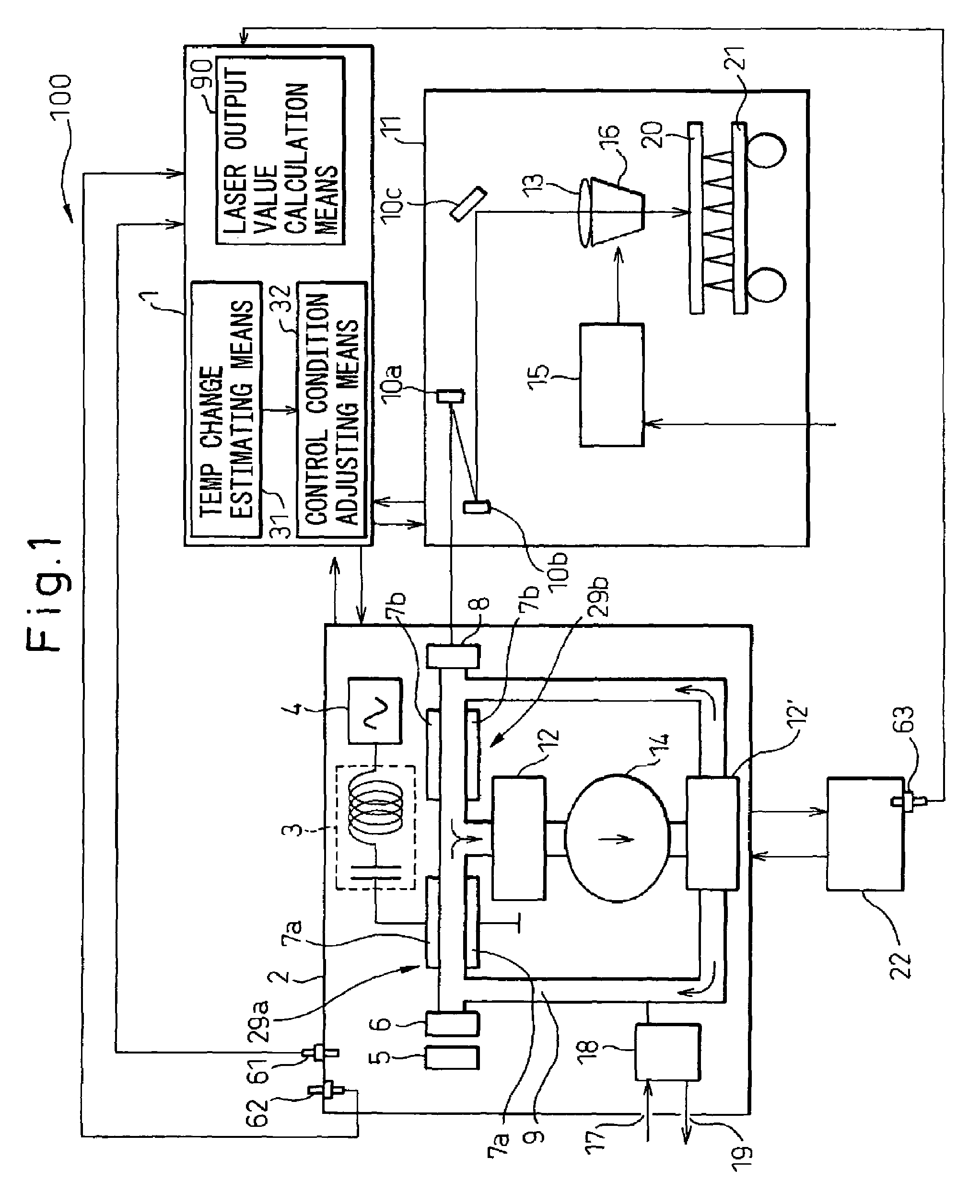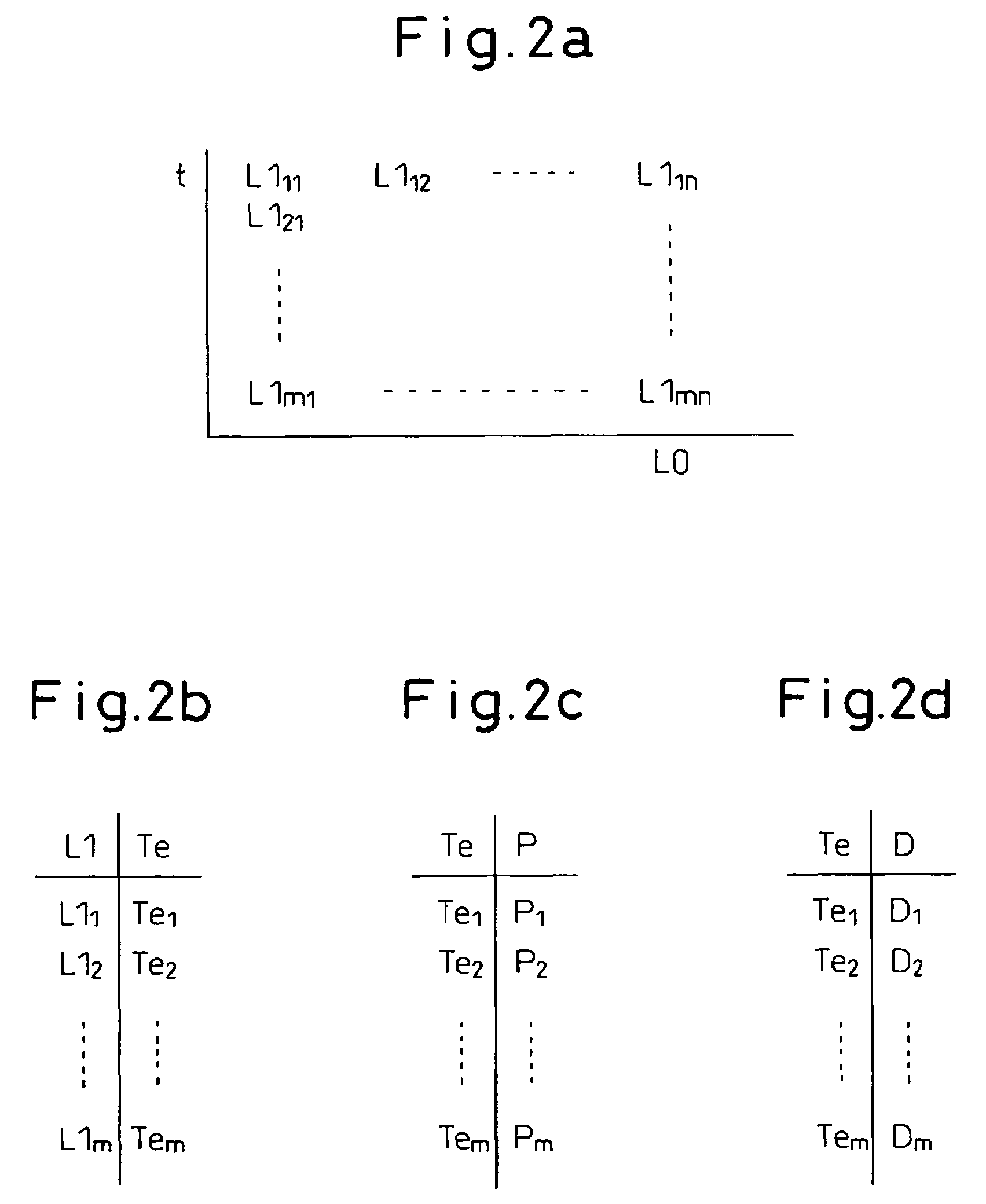Laser apparatus
a laser and lens technology, applied in the field of laser apparatus, can solve the problems of disturbance of the laser gas supply system, the temperature difference between the central portion and the peripheral portion of the condensing lens, and the immediate temperature difference, and achieve the effect of simple and accurate calculation and stable outpu
- Summary
- Abstract
- Description
- Claims
- Application Information
AI Technical Summary
Benefits of technology
Problems solved by technology
Method used
Image
Examples
Embodiment Construction
[0064]Embodiments of the invention are described below with reference to the accompanying drawings.
[0065]FIG. 1 is a schematic diagram showing a laser apparatus according to an embodiment of the invention. The laser apparatus 100 according to this invention includes a laser oscillator 2 and a laser machine 11, which are connected electrically to each other through a control unit 1 as shown in FIG. 1.
[0066]The laser oscillator 2 is of induction discharge excitation type and includes a discharge tube 9 connected to a laser gas pressure control system 18. The laser gas pressure control system 18 can supply the laser gas to the discharge tube 9 through a laser gas supply port 17 and discharge the laser gas from the discharge tube 9 through a laser gas discharge port 19. A rear mirror 6 (internal mirror of the resonator) having a very small partial transmissibility is arranged at an end of the discharge tube 9, and an output mirror 8 having a partial transmissibility of several tens of p...
PUM
| Property | Measurement | Unit |
|---|---|---|
| temperature | aaaaa | aaaaa |
| distance | aaaaa | aaaaa |
| pressure | aaaaa | aaaaa |
Abstract
Description
Claims
Application Information
 Login to View More
Login to View More - R&D
- Intellectual Property
- Life Sciences
- Materials
- Tech Scout
- Unparalleled Data Quality
- Higher Quality Content
- 60% Fewer Hallucinations
Browse by: Latest US Patents, China's latest patents, Technical Efficacy Thesaurus, Application Domain, Technology Topic, Popular Technical Reports.
© 2025 PatSnap. All rights reserved.Legal|Privacy policy|Modern Slavery Act Transparency Statement|Sitemap|About US| Contact US: help@patsnap.com



